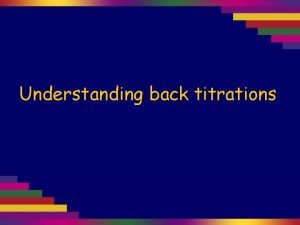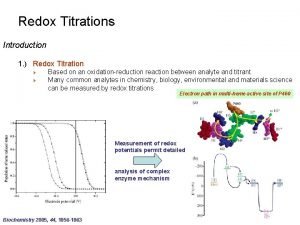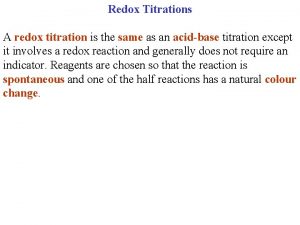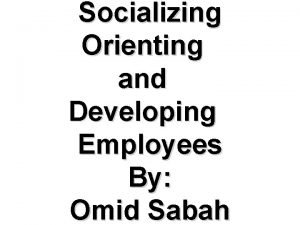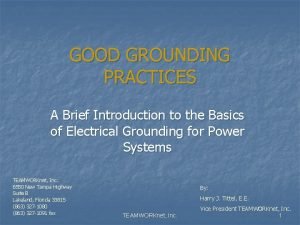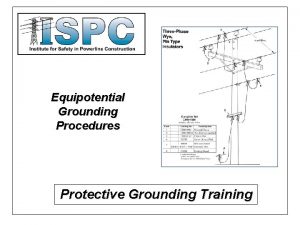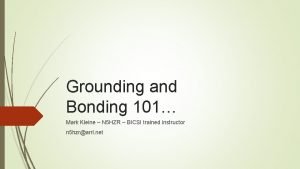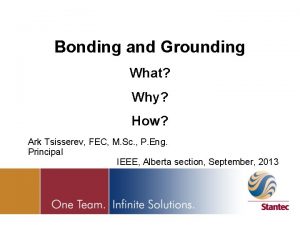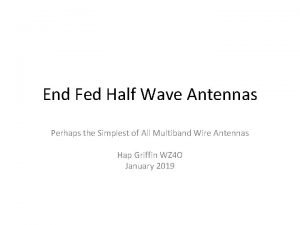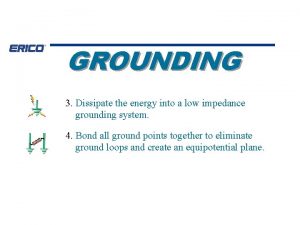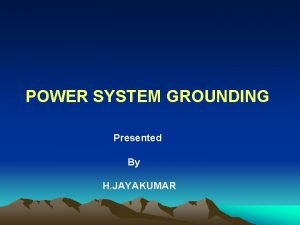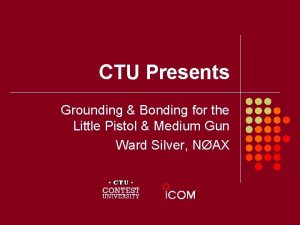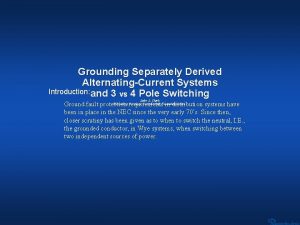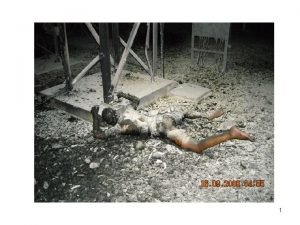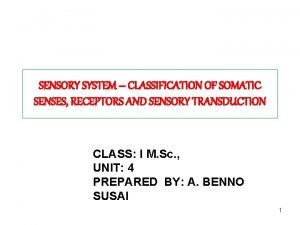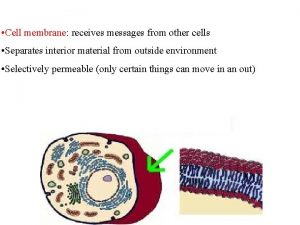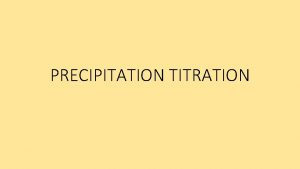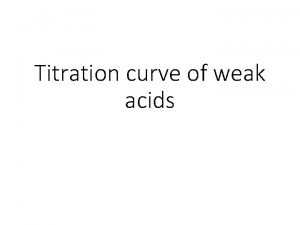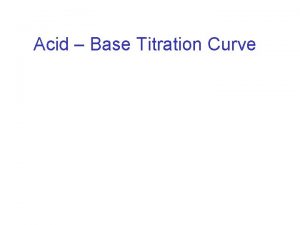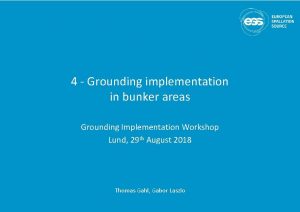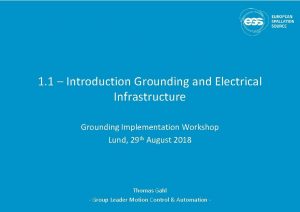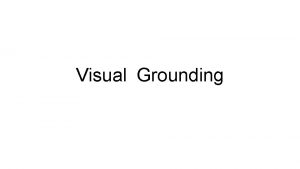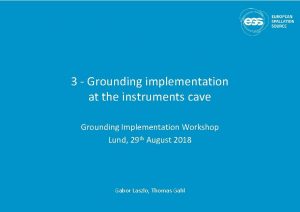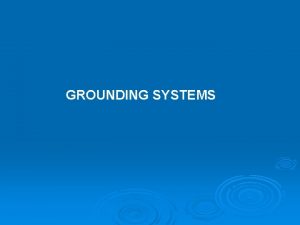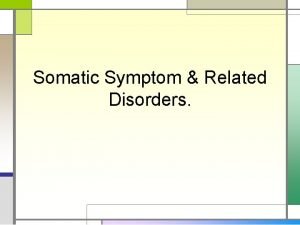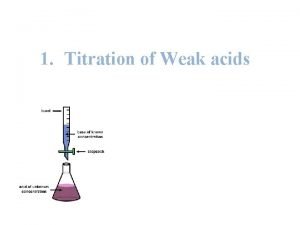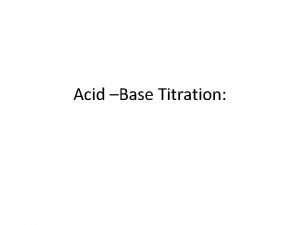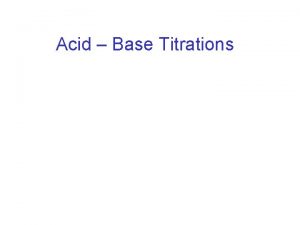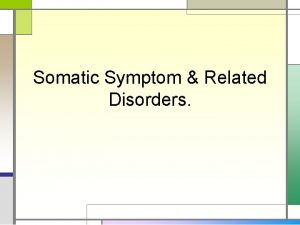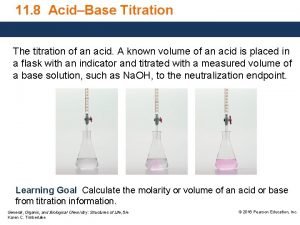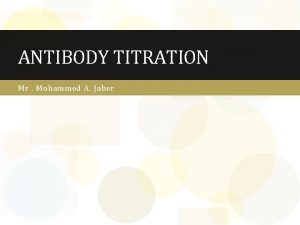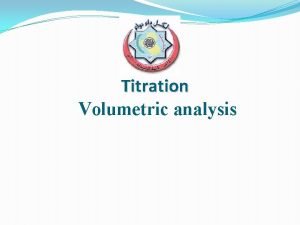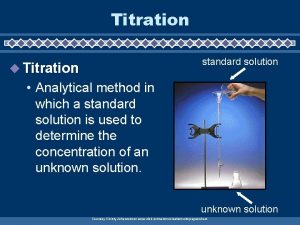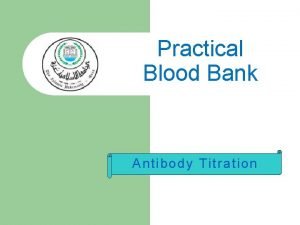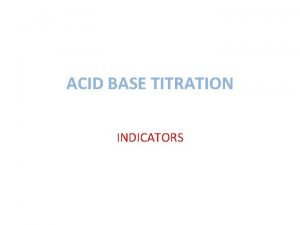Somatic Regulation Practices Grounding Orienting Tracking Titration Pendulation





































- Slides: 37

Somatic Regulation Practices Grounding, Orienting, Tracking, Titration & Pendulation Michael Shiffman, Ph. D The Insight Center April 17, 2021

Current Context: A Perfect Storm for Traumatic Stress Extreme divisiveness in cultural and political discourse Racial tensions, unemployment and workplace conditions predominate the news and social ethos Looming discord related to Covid-19 and the 2020 election Shelter-in-place creates isolation and disconnection from friends and family Loss of trust, betrayal and absence of coherent leadership Fear and anxiety for our safety and that of our loved ones Deep complex grief that is stimulated and re-stimulated by news coverage and social media Experience of powerlessness and groundlessness

Normal Responses to Extraordinary Stress We feel too much or too little Feeling afraid, tense, jumpy hyper-alert, numb, dazed, confused Feeling depressed, anxious, worried, mood swings Difficulty sleeping, Covid-dreams, nightmares Seeing images associated with stressful events Avoiding reminders of the source of stress Over-activity, irritability or lack of energy; appetite; increased or excessive substance use Anxiety related to vaccination

Workshop Schedule Workshop Orientation Didactics / Nervous system review Experiential Exercises - Dyads Safe place Grounding Orienting Tracking Titration & Pendulation Discussion / Q&A

Workshop Logic Connection with others is compromised due to Covid-19 External pressure activates Implicit and somatic memories Dissociation, dysregulation and disconnection increases Somatic, affective and cognitive complaints increase We need to recognize traumatic symptomology Autonomic nervous system directs our attention to Grounding, Orienting, Tracking, Titration & Pendulation support processing distress Support client organization and regulation Experiential exercises metabolize conceptual understanding Working bottom-up integrates the body into any theoretical framework and accesses implicit memories

Workshop Logic, cont. Safety and trust are baseline and fundamental Covid-19 isolates and separates, betrayal by leadership Implicit and somatic memories are activated under pressure Dissociation, dysregulation and disconnection increases Experiential exercises metabolize conceptual understanding Working bottom-up integrates the body into any theoretical framework and accesses implicit memories Support & build on organized and regulated parts

Autonomic Nervous System Two Major Branches Sympathetic Nervous System Parasympathetic Nervous System

Autonomic Nervous System Sympathetic Nervous System Activates the “Gas” Preparation for Fight or Flight Activates Somatic and Emotional Arousal

Autonomic Nervous System Sympathetic Nervous System Activates the “Gas” Preparation for Fight or Flight Activates Somatic and Emotional Arousal Parasympathetic Nervous System Activates the “Brake” Conservation States or Energetic Collapse Activates Rest and Digest States

Autonomic Nervous System

Polyvagal Theory Evolution of Brain Development

Polyvagal Theory and the Vagus System Theory of Hierarchical Response Ventral Vagal Social Engagement Fight or Flight Mobilization (Sympathetic Activation) Dorsal Vagal Immobilization (fainting, shutdown) Vagus nerve has two branches One innervates heart and lungs One innervates gut and digestion Both have myelinated efferent fibers

Polyvagal Theory and the Vagus System Neuroception Gut reaction – How the nervous system assesses safety Example: Infant smiles at parent, cries with stranger Enteroception Experience of internal sensations Heart and respiratory rate, gut constriction, peristalsis, gurgling Hypothalamic-Pituitary-Adrenal Complex (HPA Axis) Hormone secreting glands related to stress response Cortisol

Arousal and Activation Arousal & Activation Emotional Arousal Nervous System Activation Biological Measures of Capacity to Regulate Heart Rate Variability (HRV) Duration from activation to resting state Activation - Deactivation Cycles Respiratory Sinus Arrhythmia (RSA) Heart Beats per Breath

Top-Down & Bottom-up Processing

Traumatic Reactivity Nervous system response to real or imagined threat Indicative of systemic overwhelm Somatic Hijacking Fight, Flight or Freeze Fight or Flight – Sympathetic Activation Freeze – Parasympathetic Activation

10 minute Break

Experiential Exercises Create Safe Space Ground Orient Track sensations, feelings & thoughts Titrate painful memories Pendulate – organic and intentional

Experiential Exercises Exercise Safety Purpose Stability, predictability, trust Grounding Embodiment, felt sense Orienting Location in present time and space Tracking Awareness of bodily sensations, activities, thoughts and feelings Titration & Remaining in the window of tolerance Pendulation Reduction of reactivity

Creating Safe Space Baseline for all effective therapy Imaginal or Actual Place Absorb into sense data Sight Sounds Scent Feel Taste Track impact on body Tack impact on Sense of Self

Why Grounding? Puts attention into the body Trains the mind to perceive somatic activity Not imaginal, embodied attention Distal from common anxiety symptoms Can be practiced anywhere at anytime Empowering – Supports Agency Supports Bottom-up processing

Grounding Exercise Trace contact of feet on ground Trace contact up body to top of head Adjust weight to balance on sit bones evenly from left to right Adjust weight to balance front to back Let your attention go to your breath Notice how you experience yourself Debrief

Orienting Exercise Notice how you feel in your body Imagine scary situation Look around the room Name 3 - 5 objects that draw your attention Let your attention go to your breath Notice how you experience yourself Debrief

2 Tracking Exercises Tracking our own activation – deactivation cycles Tracking client’s activation – deactivation cycle in silence

Tracking Activation – Deactivation 6 mins Ground Bring to mind a recent, mildly upsetting experience Track reactions to the memory Track any sensations, muscular shifts, movements or emotions Ground Debrief: What did you notice?

Tracking within the Relational Field Dyad - 15 mins 6 minutes for each person in dyad (Client – Therapist) Client grounds, remembers a mildly upsetting experience, tracks sensations, muscular, physical and emotional shifts Therapist grounds & tracks their experience while tracking their clients’ experience. Client grounds until regulated. Pause 1 minute Switch roles Debrief: What did you notice in yourself and observe in client

Tracking within the Relational Field Triad - 21 mins 6 minutes for each person in triad (Client – Therapist – Observer) Client grounds, remembers a mildly upsetting experience, tracks sensations, muscular, physical and emotional shifts Therapist grounds & tracks their experience while tracking their clients’ experience. Client grounds until regulated. Observer tracks own experience and tracks that of the other two Pause 1 minute Switch roles: Client to Observer, Observer to Therapist, Therapist to Client Debrief: What did you notice in yourself and observe in client

Titration In chemistry titration means to dilute potency Titration is the process used for reducing the potency of traumatic reactivity The painful memory is connected to a pleasant experience to make it less painful

Pendulation For every action there is an equal and opposite reaction. Pendulation is a natural, organic activity for the restoration of systemic equilibrium Pendulation can be intentional Intentional use of Pendulation serves titration

Pendulation for Titration Ground in pleasant sensations or safe space Satiate oneself in the information from the sense gates Briefly touch into the painful memory / source of reactivity Return to the pleasant / safe place until reaction returns to baseline Repeat until the reactivity is significantly reduced or eliminated

Basic Clinical Principles Support connection & organization Track connection – disconnection Track organization – disorganization Develop positive resources Support somatic awareness Support mindfulness

Basic Clinical Principles Support connection & organization Explore identity Support expansion and aliveness Work with identifications Support disidentification

Basic Clinical Principles Support connection & organization Explore identity Work in present time Support agency Support empowerment Support adult consciousness

Basic Clinical Principles Support connection & organization Explore identity Work in present time Support nervous system regulation Orienting Grounding Tracking Sensations Bodily Movement and Posture Affect Thoughts

Basic Clinical Principles Support connection & organization Explore identity Work in present time Support nervous system regulation Work within range of resilience / window of tolerance Build on

Question & Answers Discussion

Somatic Regulation Practices Michael Shiffman, Ph. D The Insight Center April 17, 2021
 Back titrations
Back titrations Precipitation titration questions
Precipitation titration questions Redox titration curve
Redox titration curve Redox titration definition
Redox titration definition Ati nurse logic
Ati nurse logic Socializing orienting and developing employees
Socializing orienting and developing employees What is the objective of earthing
What is the objective of earthing Nasa std 4003
Nasa std 4003 Job card grounding
Job card grounding Tower grounding system training
Tower grounding system training Non separately derived system grounding diagram
Non separately derived system grounding diagram Reddit
Reddit Post glover hrg
Post glover hrg Grounding
Grounding H1 h2 h3 transformer
H1 h2 h3 transformer Decoupling from utility grounding system
Decoupling from utility grounding system Equipotential grounding
Equipotential grounding Grounding and bonding level 1 lesson 5
Grounding and bonding level 1 lesson 5 Grounding seeking safety
Grounding seeking safety Megadyne grounding pad
Megadyne grounding pad Grounding system design
Grounding system design Awcy ark
Awcy ark Zeppelin antenna
Zeppelin antenna Grounding
Grounding Trim and stability
Trim and stability Pxie-5775
Pxie-5775 Arrl grounding and bonding pdf
Arrl grounding and bonding pdf Separately derived systems
Separately derived systems Grounding grid design
Grounding grid design Job card grounding
Job card grounding Autonomic nervous system pathway
Autonomic nervous system pathway Classification of sensory receptors
Classification of sensory receptors Pomato somatic hybrid
Pomato somatic hybrid What is the difference between somatic and special senses
What is the difference between somatic and special senses Save a life
Save a life Characteristics of sensory neurons
Characteristics of sensory neurons Germ cell vs somatic cells
Germ cell vs somatic cells Tabes dorsalis syphilis
Tabes dorsalis syphilis
